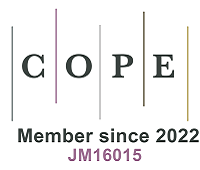Impact of grain boundary segregation on piezoelectric performance of CaBi2Nb2O9 high-temperature piezoceramics
Abstract
Grain boundary segregation plays a critical role in determining the properties of polycrystalline materials, yet its influence on piezoelectric performance remains underexplored. In this work, bismuth layer-structured piezoceramic W6+-doped CaBi2Nb2O9 (WCBN) was chosen to investigate the effect of grain boundary segregation on the piezoelectric properties through multiscale structural characterization and phase-field simulations. It’s found that improper grain boundary segregation can induce internal stress fields that restrict domain switching dynamics, leading to the deterioration of piezoelectric response. Therefore, a novel poling process was developed, which effectively alleviated the segregation-induced stress constraints and enhanced the piezoelectric coefficients by 180%. More importantly, the mechanical properties are also significantly improved by optimizing the preparation process, especially the fracture toughness of WCBN ceramics was increased to 2.7 MPa m1/2 which is two times over that of traditional Pb(Zr, Ti)O3 piezoceramics. These findings establish direct correlations between grain boundary segregation, internal stress, and domain switching behavior, providing fundamental insights for the design of piezoelectric materials that integrate both high piezoelectric and mechanical properties, which could be greatly beneficial to long-term stable operation in harsh environments with high temperatures and complex vibrations for bismuth layer-structured piezoceramics.
Keywords
High-temperature piezoelectric ceramics, grain boundary segregation, domain switching, internal stress, fracture toughness
Cite This Article
Zhou Y, Zhang Y, Huang J, Liu R, Fu Z, Xu F, Shen Z, Liang R, Zhou Z. Impact of grain boundary segregation on piezoelectric performance of CaBi2Nb2O9 high-temperature piezoceramics. Microstructures 2025;5:[Accept]. http://dx.doi.org/10.20517/microstructures.2025.101














